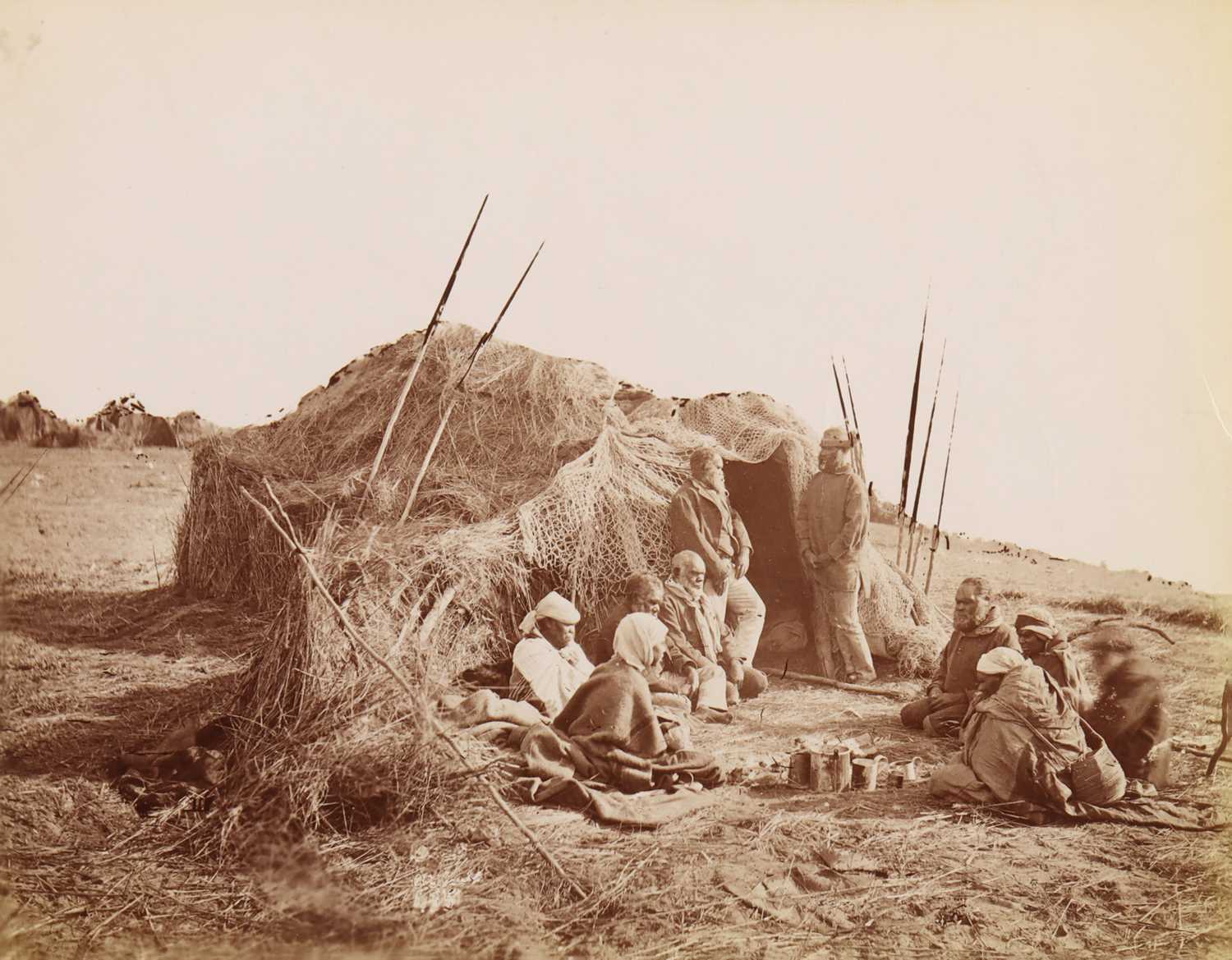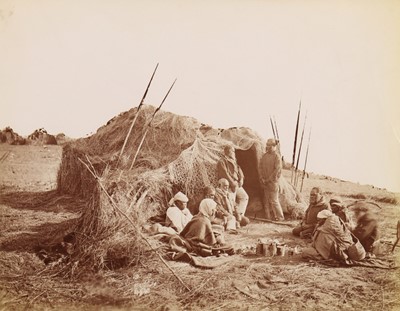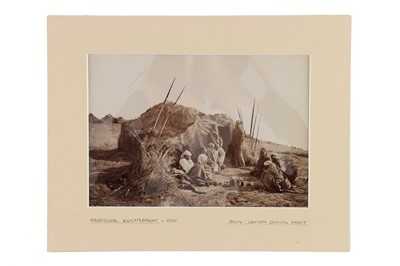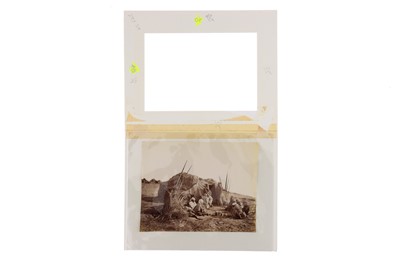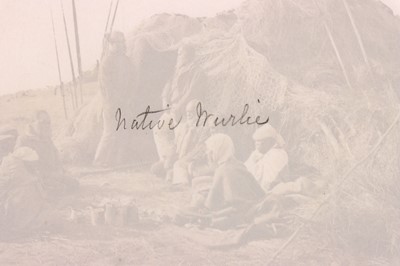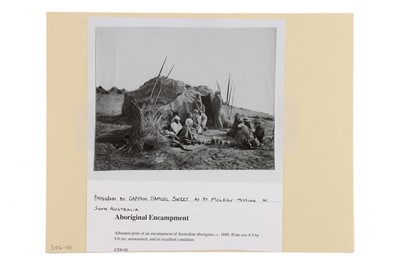30th Apr, 2024 13:00
Photographs & Optical Toys
Australia. Captain Samuel Sweet
Albumen print 200mm x 150mm unmounted in card frame.
An encampment of aborigines in South Australia.
Captain Samuel White Sweet (1 May 1825 – 4 January 1886) left a lasting imprint on Australian history as both a mariner and a pioneering photographer. After arriving in Australia in 1864, Sweet played a significant role in the early colonization of the Northern Territory. However, his seafaring career took an unexpected turn following the grounding of his ships Gulnare and Wallaroo, incidents for which he bore responsibility. This prompted a shift in focus from maritime pursuits to photography, a passion he had nurtured as a hobby.
Transitioning from amateur enthusiast to professional photographer, Sweet emerged as a trailblazer in Australian landscape photography. By 1872, he had honed his craft and established a studio on Flinders Street in Adelaide, later relocating to Rundle Street. While portrait photography was part of his repertoire, Sweet's true passion lay in capturing the rugged beauty of the Australian landscape. Equipped with a horse-drawn darkroom, he embarked on expeditions across South Australia, immortalizing the vast outback and rustic homesteads through his lens.
Sweet's work garnered recognition and acclaim, with his photographs showcased in exhibitions across Melbourne and Sydney. During the 1870s and early 1880s, he emerged as one of the colony's foremost documentary photographers, embracing technological advancements such as the innovative dry-plate/gelatin process. His legacy endures as a testament to his pioneering spirit and his invaluable contributions to the art of Australian photography.
Sold for £175
Result plus buyers premium
Albumen print 200mm x 150mm unmounted in card frame.
An encampment of aborigines in South Australia.
Captain Samuel White Sweet (1 May 1825 – 4 January 1886) left a lasting imprint on Australian history as both a mariner and a pioneering photographer. After arriving in Australia in 1864, Sweet played a significant role in the early colonization of the Northern Territory. However, his seafaring career took an unexpected turn following the grounding of his ships Gulnare and Wallaroo, incidents for which he bore responsibility. This prompted a shift in focus from maritime pursuits to photography, a passion he had nurtured as a hobby.
Transitioning from amateur enthusiast to professional photographer, Sweet emerged as a trailblazer in Australian landscape photography. By 1872, he had honed his craft and established a studio on Flinders Street in Adelaide, later relocating to Rundle Street. While portrait photography was part of his repertoire, Sweet's true passion lay in capturing the rugged beauty of the Australian landscape. Equipped with a horse-drawn darkroom, he embarked on expeditions across South Australia, immortalizing the vast outback and rustic homesteads through his lens.
Sweet's work garnered recognition and acclaim, with his photographs showcased in exhibitions across Melbourne and Sydney. During the 1870s and early 1880s, he emerged as one of the colony's foremost documentary photographers, embracing technological advancements such as the innovative dry-plate/gelatin process. His legacy endures as a testament to his pioneering spirit and his invaluable contributions to the art of Australian photography.
Auction: Photographs & Optical Toys, 30th Apr, 2024
